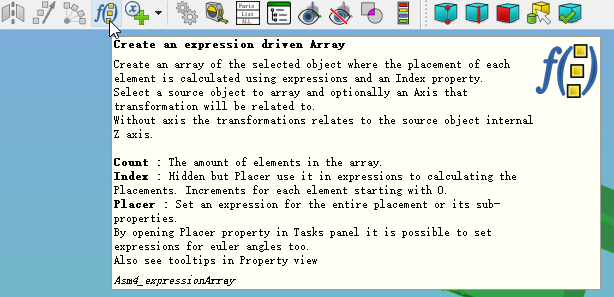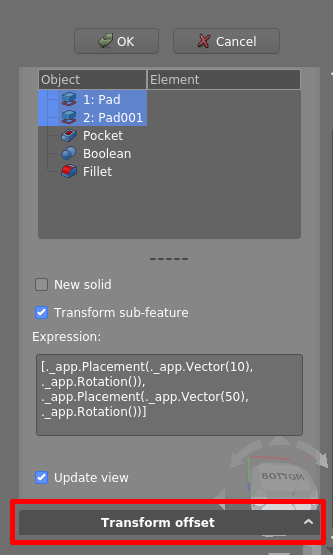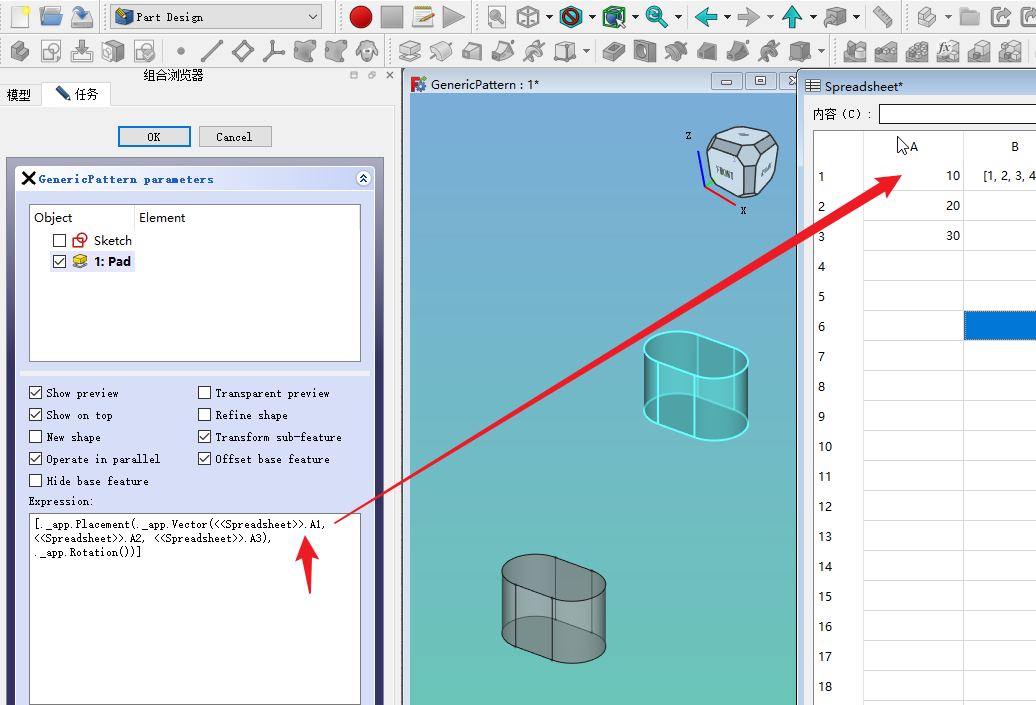这个工具和A4里的expression drive array有点类似,但输入的参数型式完全不一样,自由性方面也不同,见下文。
draft工作台里的各种阵列功能,详见9.9节
A4里的表达式阵列,见1.9节
还有一个叫Lattice2的强大阵列工作台,可以试试
如何使用
这个工具看起来很强大,可是只能在论坛里找到这个例子:
Extrusion is mainly for creating non-solid and use them as datum or pad/pocket. You can extrude vertex to edge, edge to face, face to shell, or face to solid if you want.
GenericPattern allows you to use an expression to control the pattern, including the number of patterns, and since you can call Python function in expression using my branch, you can practically do anything with it.
There is also the new TransformOffset property in every pattern feature, that allows you to specify an offset of the original feature before patterning. This effectively provides an easy way to move a solid and then merge it. The task panel for TransformOffset is hidden by default, because it may interfere with feature selection in the normal task. You can expand it manually, which will auto hide the normal task.
[
._app.Placement(._app.Vector(0),._app.Rotation()),
._app.Placement(._app.Vector(0;0;-1),._app.Rotation(18.0;0.0;0.0))
]这个的用法目前只有上面这个“数组”,中括号中,以逗号为分割(分组),逗号后面有没有空格没关系,保存后,会自动加上空格。
逗号分组后,第一组数据就是第一个模型体的位置和旋转角度,位置因为是坐标系,所以要用Vector来表达,如果是0坐标,则省略了y和z,正常都是Vector(x;y;z),Rotation是分别绕xyz三轴的旋转角度。
如果阵列5个,则输入5组数据。
关联表格
阵列参数能否和表格关联呢?答案是可以的。
与A4的表达式阵列的区别
结果都是一样的,都是实现位置和旋转不断改变的阵列。但是,这里的需要手工输入多组数据,所以组数个数只能是固定的,即阵列数量是固定的,但是阵列的定位和旋转角度和索引无关,这个方面更加自由。而A4的阵列数量是任意的,阵列里的每个元素的定位和旋转角度,是和索引关联的,基本是一个递增(乘以索引)的关系。
这个只是改变位置和旋转角度,如何随着阵列,改变每个模型的尺寸呢?
SW里的叫变化的尺寸阵列Varying Dimension Patterns
https://help.solidworks.com/2026/Chinese-simplified/SolidWorks/sldworks/c_vary_dim_patterns2.htm?verRedirect=1
最后编辑:秦晓川 更新时间:2025-11-25 20:48
